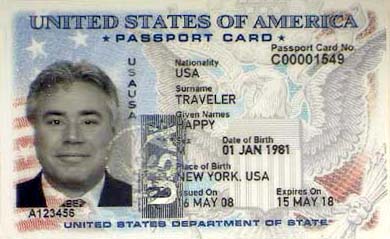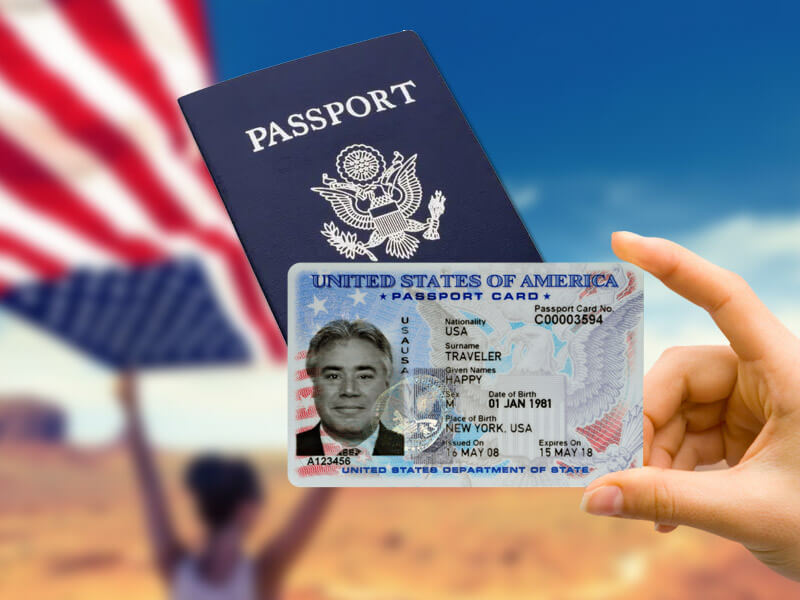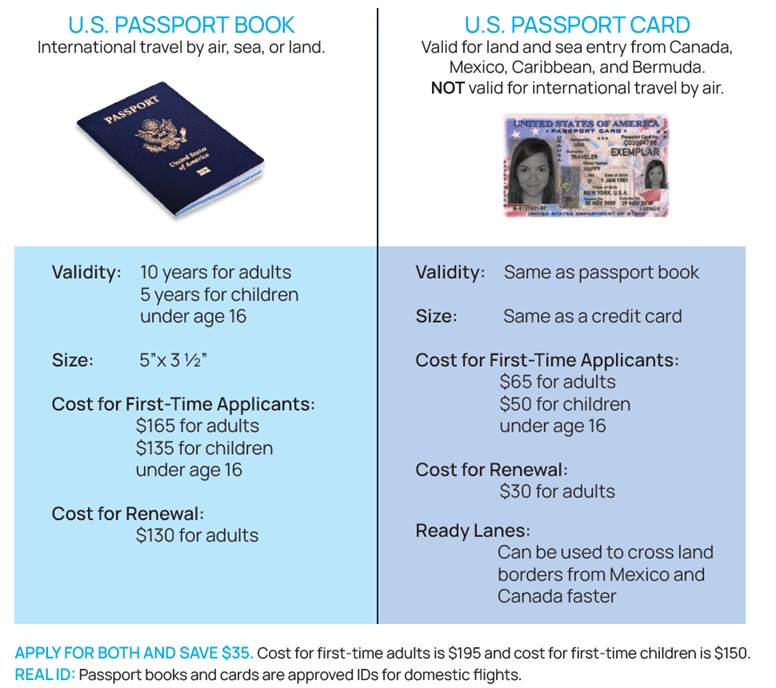Understanding the Basics of Passport Types
The US Department of State issues two types of passports: the passport book and passport card. Both serve as proof of citizenship and identity, but they have distinct differences in terms of their purpose, benefits, and usage. A passport book is a traditional travel document that contains multiple pages for visa stamps and endorsements, making it the most widely accepted form of identification for international travel. On the other hand, a passport card is a less expensive, wallet-sized document that is only valid for land and sea travel to and from Canada, Mexico, the Caribbean, and Bermuda.
Having a passport is essential for international travel, as it provides proof of citizenship and identity. A passport book is the gold standard for international travel, offering the flexibility to travel by air, land, or sea. It is required for all types of international travel, including flights, cruises, and road trips. In contrast, a passport card is a more limited option, suitable only for land and sea travel to specific destinations.
Understanding the differences between a passport book and passport card is crucial to ensure that you have the right document for your next trip. In the next section, we will explore the factors to consider when deciding between a passport book and passport card, including travel plans, budget, and personal preferences.
How to Choose the Right Passport for Your Needs
When deciding between a passport book and passport card, several factors come into play. Travel plans, budget, and personal preferences are all important considerations. For instance, if you plan to travel by air to Europe or Asia, a passport book is the better choice. On the other hand, if you’re taking a road trip to Canada or a cruise to the Caribbean, a passport card may be sufficient.
Budget is another key factor to consider. Passport cards are generally less expensive than passport books, with a lower application fee and no additional costs for pages or expedited processing. However, if you plan to travel frequently or need a passport for business purposes, a passport book may be a better investment in the long run.
Personal preferences also play a role in the decision-making process. Some travelers may prefer the convenience and flexibility of a passport book, while others may appreciate the smaller size and lower cost of a passport card. Ultimately, the choice between a passport book and passport card depends on your individual needs and circumstances.
For example, if you’re a frequent traveler who needs a passport for business or pleasure, a passport book may be the better choice. However, if you’re a casual traveler who only needs a passport for occasional trips to Canada or Mexico, a passport card may be sufficient. By considering your travel plans, budget, and personal preferences, you can make an informed decision and choose the right passport for your needs.
Passport Book: The Gold Standard for International Travel
A passport book is the most widely accepted form of identification for international travel. It is a traditional travel document that contains multiple pages for visa stamps and endorsements, making it the gold standard for international travel. One of the key benefits of a passport book is its validity for all types of international travel, including air, land, and sea. Whether you’re traveling to Europe, Asia, or South America, a passport book is the best choice.
Another advantage of a passport book is its ability to accommodate visa requirements. Many countries require visas for entry, and a passport book provides the necessary pages for visa stamps and endorsements. Additionally, a passport book can be used for travel to countries that require a visa, such as China, India, and Brazil.
A passport book also offers the flexibility to add additional pages for visas and stamps. This is particularly useful for frequent travelers who may need to visit multiple countries in a single trip. With a passport book, you can add extra pages as needed, ensuring that you have enough space for all your travel documents.
In terms of security features, a passport book is equipped with advanced security features, including a unique passport number, a digital photo, and a secure paper stock. These features help to prevent counterfeiting and ensure the authenticity of the passport.
Overall, a passport book is the best choice for international travel, offering a high level of security, flexibility, and convenience. Whether you’re a business traveler, a tourist, or a student, a passport book is the gold standard for international travel.
Passport Card: A Convenient Option for Land and Sea Travel
A passport card is a convenient and affordable option for land and sea travel to and from Canada, Mexico, the Caribbean, and Bermuda. It is a wallet-sized document that is less expensive than a passport book, with a lower application fee and no additional costs for pages or expedited processing.
One of the main advantages of a passport card is its smaller size, making it easier to carry and store. It is also a more compact option for travelers who only need to visit countries that do not require a passport book. Additionally, a passport card is a great option for frequent travelers who need a backup document in case their passport book is lost or stolen.
A passport card is also a suitable option for land and sea travel, including road trips to Canada or Mexico, or cruises to the Caribbean or Bermuda. It is accepted by U.S. Customs and Border Protection and is a valid form of identification for these types of travel.
However, it’s essential to note that a passport card is not valid for international air travel, and it does not have the same level of security features as a passport book. Therefore, it’s crucial to understand the limitations of a passport card and choose the right document for your specific travel needs.
Overall, a passport card is a convenient and affordable option for land and sea travel, offering a more compact and affordable alternative to a passport book. By understanding the characteristics and advantages of a passport card, you can make an informed decision and choose the right document for your next trip.
Key Differences: Passport Book vs Passport Card
When it comes to choosing between a passport book and passport card, it’s essential to understand the key differences between the two. Here are the main differences:
Validity: A passport book is valid for all types of international travel, including air, land, and sea. A passport card, on the other hand, is only valid for land and sea travel to and from Canada, Mexico, the Caribbean, and Bermuda.
Cost: A passport book is more expensive than a passport card, with a higher application fee and additional costs for pages and expedited processing. A passport card, however, is a more affordable option, with a lower application fee and no additional costs.
Size: A passport book is a larger document, with multiple pages for visa stamps and endorsements. A passport card, on the other hand, is a smaller, wallet-sized document.
Travel Restrictions: A passport book has no travel restrictions, while a passport card is only valid for land and sea travel to and from specific countries.
The following table summarizes the key differences between a passport book and passport card:
| Feature | Passport Book | Passport Card |
|---|---|---|
| Validity | All international travel | Land and sea travel to/from Canada, Mexico, Caribbean, and Bermuda |
| Cost | Higher application fee, additional costs for pages and expedited processing | Lower application fee, no additional costs |
| Size | Larger document with multiple pages | Smaller, wallet-sized document |
| Travel Restrictions | No restrictions | Only valid for land and sea travel to/from specific countries |
By understanding these key differences, you can make an informed decision and choose the right passport for your next trip.
Real-Life Scenarios: When to Use Each Passport Type
Now that we’ve discussed the key differences between a passport book and passport card, let’s explore some real-life scenarios where one might be more suitable than the other.
Trip to Europe: If you’re planning a trip to Europe, a passport book is the best choice. Europe has strict visa requirements, and a passport book provides the necessary pages for visa stamps and endorsements. Additionally, many European countries require a passport book for entry, so it’s essential to have one.
Cruise to the Caribbean: If you’re taking a cruise to the Caribbean, a passport card may be sufficient. Since you’ll be traveling by sea, a passport card is valid for entry into the Caribbean islands. However, if you plan to visit any European ports during your cruise, a passport book may be required.
Road Trip to Canada: If you’re planning a road trip to Canada, a passport card is a great option. Since you’ll be traveling by land, a passport card is valid for entry into Canada. Additionally, a passport card is a more affordable option than a passport book, making it a great choice for a road trip.
Business Travel to Mexico: If you’re traveling to Mexico for business, a passport book is the best choice. Mexico has strict visa requirements, and a passport book provides the necessary pages for visa stamps and endorsements. Additionally, a passport book is a more professional option, making it a great choice for business travel.
These scenarios illustrate the importance of choosing the right passport for your specific travel needs. By understanding the differences between a passport book and passport card, you can make an informed decision and ensure a smooth trip.
Application Process: How to Get a Passport Book or Card
Obtaining a passport book or card involves a straightforward application process. To get started, applicants must gather the necessary documents, fill out the application form, and submit it to the US Department of State. Here’s a step-by-step guide to help navigate the process:
Required Documents:
- Proof of US citizenship (birth certificate or naturalization certificate)
- Proof of identity (driver’s license or government-issued ID)
- Photocopy of both sides of the ID
Application Forms:
Applicants can download and complete form DS-11 (Application for a US Passport) from the US Department of State’s website or pick one up from a passport acceptance facility. Fill out the form online and print it, or print a blank form and fill it out by hand. Do not sign the form until instructed to do so by an acceptance agent.
Passport Photos:
Applicants must provide one recent, color photograph that meets the Department of State’s requirements. The photo should be 2×2 inches in size, with a white background, and a neutral expression.
Application Fees:
The application fee for a passport book is currently $110 for adults (16 and older) and $80 for children (15 and younger). The fee for a passport card is $30 for adults and $15 for children. There is also an execution fee, which varies by acceptance facility but is typically between $25 and $35.
Processing Times:
Routine service typically takes 6-8 weeks, while expedited service takes 2-3 weeks. Expedited service at a regional agency takes 1-2 weeks. Applicants can also use a private passport expediting company to expedite the process for an additional fee.
Submission and Processing:
Once the application is complete, submit it to a passport acceptance facility, such as a post office or library. The acceptance agent will review the application, witness the applicant’s signature, and send it to the Department of State for processing.
Understanding the application process and required documents can help applicants navigate the process smoothly. Whether applying for a passport book or card, it’s essential to carefully review the requirements and submit a complete application to avoid delays. By following these steps, applicants can obtain the necessary travel documents and embark on their international journey with confidence.
Conclusion: Making an Informed Decision
In conclusion, understanding the differences between a passport book and passport card is crucial for making an informed decision for your next trip. By considering factors such as travel plans, budget, and personal preferences, you can choose the right passport type to suit your needs. Whether you’re planning a trip to Europe, a cruise to the Caribbean, or a road trip to Canada, having the correct passport can ensure a smooth and enjoyable journey.
Remember, a passport book is the gold standard for international travel, offering validity for all types of travel, visa requirements, and the ability to add additional pages for visas and stamps. On the other hand, a passport card is a convenient option for land and sea travel to and from Canada, Mexico, the Caribbean, and Bermuda, offering a lower cost and smaller size.
When deciding between a passport book and passport card, it’s essential to consider what’s the difference between the two and how they align with your travel plans. By understanding the key differences, including validity, cost, size, and travel restrictions, you can make an informed decision and avoid any potential issues during your trip.
In summary, having a passport is a vital part of international travel, and choosing the right type can make all the difference. By considering your options carefully and understanding the differences between a passport book and passport card, you can ensure a stress-free and enjoyable journey. Whether you’re a seasoned traveler or embarking on your first international trip, making an informed decision about your passport type can help you navigate the world with confidence.







